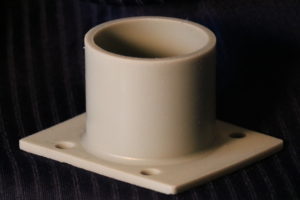C & M Rubber Co., founded in 1964, was primarily a distributor of rubber goods and related lines for a host of manufacturers including Uniroyal and Goodyear. The primary focus was stocking and reselling a large selection of standard o-rings, gaskets, hose, v-belts and conveyor belts to commercial and military installations. C & M was also heavily involved in military contracts, preparing skin-pak service kits for a variety of repair applications.
During the late 1960’s and early 70’s, C & M entered a new venture; custom silicone molding. Applying the knowledge and experience in successfully bidding military contracts, C & M Rubber Co. landed a significant contract to mold silicone seals for the Zuni rocket. As the military business grew efforts to branch out and serve other industries led to our current concentration in the medical, food service, aerospace, and high tech fields.
Molding silicone and other elastomers is primarily a function of balancing three variables: time, temperature and pressure. Of equal importance is the quality and workmanship in creating a mold (tool) that will provide a dimensionally accurate part with the desired finish. It is for this reason that we often recommend cutting a single cavity prototype tool to confirm material suitability, shrink calculations and dimensional precision. Once satisfied that the prototype is correct, the construction of production tool follows as the next step.
Since our principal market niche is production runs of one to thousands of parts, we employ the use of either a transfer or compression mold (tool) as opposed to liquid injection molding (LIM). The overriding factor in this choice of tooling format is cost. With prototyping or “limited” production runs, customers are rarely willing to commit to a high initial capital cost for tooling. Thus, transfer or compression molds (tools) offer one of the most cost-effective ways to produce more limited numbers of parts.
So which format would be best for my application?
Depending upon the geometry of the part, the elastomer being used, the target component cost and a host of other molding considerations will determine which design we recommend.
What about cost?
Typically, one of the first questions asked by novice and experienced component design engineers is how much will the tooling cost and what is the piece price? Frankly, without thoroughly reviewing your drawing, evaluating the design complexities, the required dimensional tolerances, and the estimated annual purchase requirement, our response would be inadequate upon which to make a decision.
So what is the first step?
Our engineering consultants are willing and able to recommend and quote the most cost-effective tool and piece price for your specific project. To learn more, request a quote from our team today.




















